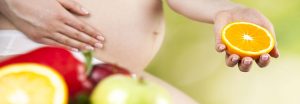
It is estimated that around 10% of pregnant women have trouble meeting their nutrient needs – but the actual number could be much higher, according to a new study by the Stevens Institute of Technology. According to the research, published in the Journal of Nutrition, over 90% of pregnant women may not be getting enough iron, vitamin D or vitamin E from their diet, while over a third may not be getting enough calcium, vitamin C and vitamin A. Worryingly, it was also found that almost two-thirds of pregnant women do not get enough folic acid from their diet – an important nutrient that helps prevent birth defects in the baby’s brain and spine.
Documenting Nutrient Intake
“It’s important to remember that many pregnant women take prenatal vitamin supplements that could help prevent nutrient deficiencies,” explains Dr. Samantha Kleinberg, lead author of the study and professor at the Charles V. Schaefer, Jr. School of Engineering and Science at Stevens University. “Still, this is a stunning result that suggests we need to look much more closely at whether pregnant individuals are getting the nutrients they need.”

While most previous research on nutrition during pregnancy has relied on a few days of food diaries or simply asking people what they remembered eating, the Stevens team asked pregnant women to take photos of everything they ate before and after two 14-day periods. Experts then reviewed the photos to determine the actual amount of food eaten and the nutrients consumed at each meal. This is a much more accurate approach, given that people are notoriously poor at estimating portion sizes or accurately reporting what they have eaten.
A photo-based approach is also much less burdensome for pregnant women, allowing data to be collected over a period of weeks instead of just a few days. According to the researchers, most surveys only cover diet for a day or two – but if you don’t feel well and don’t eat much on a particular day, or have a big feast at the weekend, it can skew the data. That’s why it’s important to look at a longer period of time and use photos to track diet. This allows you to get a much more comprehensive and accurate picture of what people have actually eaten.
Possible Links Between Eating Habits and Changes in Glucose Tolerance
The study, written in collaboration with Dr. Andrea Deierlein, director of the Division of Nutrition in Public Health at New York University, found significant differences in diet between individuals, but also between the same individuals from one day to the next, suggesting that shorter studies and population-based reports may fail to detect important nutritional deficiencies. This study suggests that in reality, an alarming number of pregnant women may not be getting the nutrients they need through their diet.
By using photos of food, Stevens’ team was also able to accurately track the exact timing of meals and snacks and examine how eating behavior patterns correlated with overall energy and nutrient intake. When pregnant women ate later in the day, the data showed, they were likely to consume significantly more calories overall – potentially an important finding as researchers explore links between eating behavior and health issues such as gestational diabetes.
The current study did not directly examine the health consequences, so it is too early to say whether inadequate nutrition or excess energy expenditure has a negative impact on pregnant women or their babies. The researchers will address this in future studies and investigate possible links between eating habits and changes in glucose tolerance. The team also hopes to automate the process of assessing nutrient content based on food photos, and develop large language models capable of automatically asking follow-up questions to obtain more accurate information.


